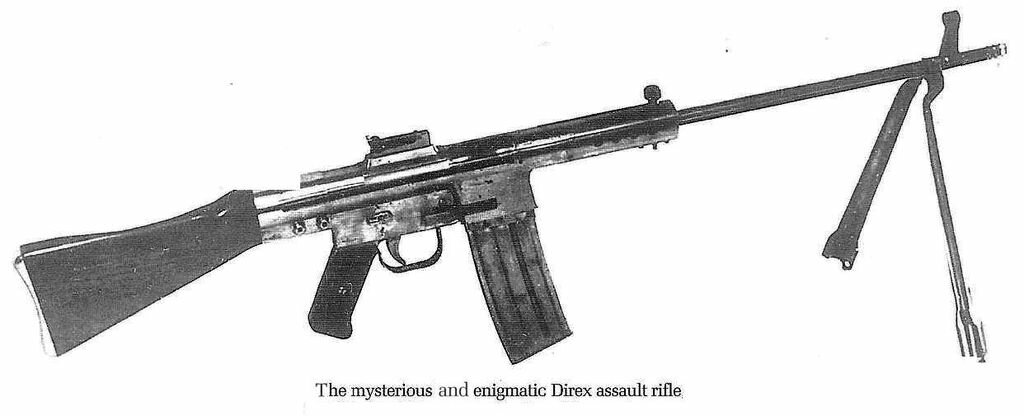klem
I really should change my personal text
- Joined
- 7 March 2015
- Messages
- 701
- Reaction score
- 1,515
The mysterious and enigmatic Direx assault rifle 1956 "In the early 1950's, there existed a firm known as Rexim S.A., with offices in Geneva. While CETME, of Spain, was developing the unfinished German Sturmgewehr 45 (M) the Rexim company began an parallel development of another assault rifle called DIREX DUG, produced by an unnamed designer. Following the basic principle of the StG 45 (M), the DIREX was of retarded blowback operation using twin roller-locks. Although there were minor differences from the CETME rifle, such as the location of the charging handle and recoil spring, the close relationship between it and the DIREX is apparent. The DIREX was made for the U. S. caliber .30 T65 (7.62×51mm NATO) cartridge. However, it is likely that no more than one or two prototypes were made, and the project was abandoned."(The World's Assault Rifles : Gary Paul Johnston -Thomas B.Nelson). "Dipl-Ing Heynen, head of the CETME assault rifle programme, says it should be mentioned, somewhat as a curiosity, that in one of the Spanish military factories a competitive weapon was developed that, however far removed from the possibility of living up to the required conditions, was nevertheless conscientiously tested and compared by a Commission which the War Ministry had named, under the guidance of the EMC, interestingly, even though the final conclusions of this Commission stated that while neither weapon could be regarded as fully developed, they had to concede that the CETME possessed certain essential advantages." (Full Circle : A Treatise on Roller Locking-R Blake Stevens-Collector Stade Publications.2006)
Attachments
Last edited:




